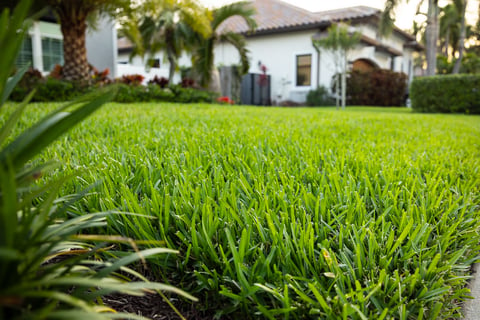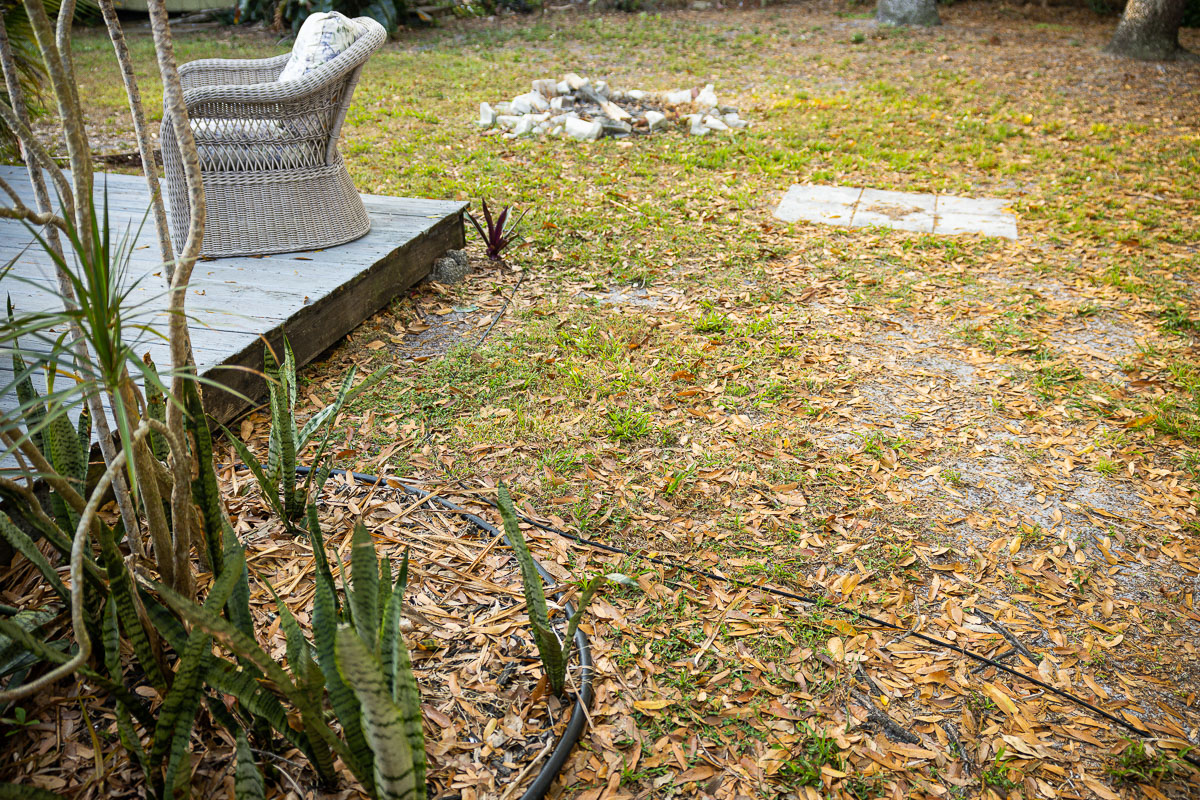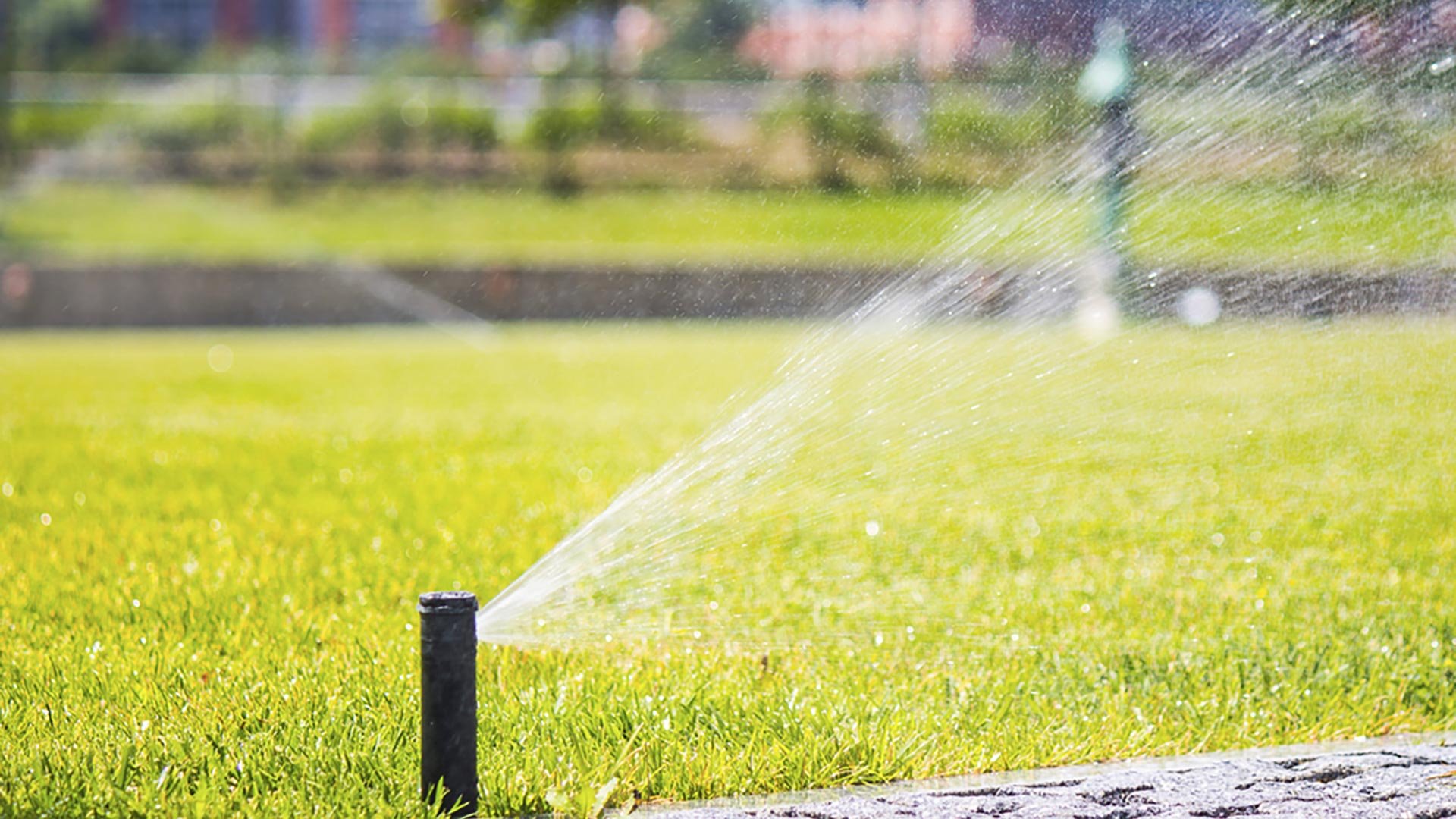


Want the secret to putting any homeowner in a bad mood with one simple word?
Weeds.
Weeds are lawn super villains, popping up out of nowhere even when you did absolutely nothing to tick them off. You can almost hear their little evil weed laughs.
How to get rid of weeds in your Florida lawn? Put pros on the job who know exactly when to apply the crucial pre-emergent herbicides to keep some weeds away, and how to quickly target others when they pop up.
Better yet, keep ugly weed villains away in the first place with a thick healthy lawn that helps crowd them out.
Let’s learn more about common weeds in southwest Florida, including:
Crabgrass
Spurge
Sedge
Dollar weed
Common Bermuda
Clover (Oxalis)
How to Get Rid of Weeds in Your Florida Lawn?
Weeds Hate Healthy Lawns
Crabgrass might fool you at first.
From a distance, it looks a lot like healthy St. Augustine turf with its lush, green blades.
Look closer, though, and you’ll see its crablike appearance, hugging the ground and growing thick, untamed stems in different directions that absorb moisture and nutrients from the surrounding soil.
Crabgrass, among the most common Florida weeds, thrives in warmer temperatures and can grow like crazy in the late spring and summer. But once cooler air arrives in the fall, crabgrass slowly fades away until only a brown patch of dead weeds remains.
Then you really notice it, and start swearing.
Here’s an impressive crabgrass fact if you ever make it onto “Jeopardy” — each crabgrass plant produces as many as 150,000 seeds.
Those pesky seeds stay behind, ready to germinate the following spring. And even seeds that don't germinate right away can hang around to sprout in future years.
So prevention is everything with crabgrass, one of the most persistent types of weeds in Florida. The key is targeting those seed villains as they germinate and take root in the soil so they don’t become more seed-producing plants.
If you wait until crabgrass shows up, you’ll have a much tougher time getting rid of it. That means applying a pre-emergent herbicide to your lawn between March and June.
When Tropical Gardens lawn technicians see crabgrass, they pull it by hand, then take photos and make a note that it’s in your yard. Then we can hit your lawn with pre-emergent treatment in the spring.
Mostly, we crowd it out with healthy turf (more on this in a minute.)

Spurge will grow anywhere, often sprouting out of sidewalk cracks and along walkways.
Give it full sun and it can really take over, crowding out lawn and plants and greedily hogging their sunlight.
Florida lawn weed identification tip: Spurge has a lacy network of thin stems with small oval blue-green leaves on both sides. Sometimes, the stems have a reddish tinge.
It doesn’t grow tall and proud, but spreads out in a flat oval or wheel shape, sometimes spreading to a foot wide.
Its flowers are very tiny, sometimes pale pink but often pale green.
This common southwest Florida weed has a super fast growth cycle, going from germination to flower and seed in 30 days, making it among the most challenging types of weeds in Florida.

Sedge is among the most common weeds in southwest Florida and tough to control.
Sedge grows faster than warm-season turf grasses like St. Augustine and Zoysia, so these dastardly weeds are really noticeable in your lawn.
Sedge quickly rises up higher than your grass, like a super annoying showoff, sticking out like a rude sore thumb and making you grouchy.
Here at Tropical Gardens we use a selective herbicide called SedgeHammer specifically designed to kill sedge.
(“Selective” weed control products kill lawn weeds without harming the grass or other plants around them.)
Unlike pre-emergent products that target weeds in the spring before they emerge, SedgeHammer can be used year round.

Dollar weed is also known as pennywort, which is kind of strange, since there’s a big difference between a penny and a dollar, but we’re getting off track.
Florida weed identification tip: This weed looks like mini lily pads with small white flowers. It spreads quickly, through both seeds and rhizomes, which makes it double trouble.
It’s best to go after dollar weed in the spring, while the plants are still young, but it can be treated throughout the year.

Common Bermuda has “common”
in its name for a reason. It’s everywhere.
Florida weed identification tip: The leaves are narrow with sharp tips. They can be blue-green or brown, depending on the season. The seed heads look like spikes with tiny, finger-like branches.
Common Bermuda is a whiz at reseeding itself, and tolerates everything from heat to drought to foot traffic, which makes it nearly impossible to control without a non-selective herbicide, which will also kill everything else growing around it, making it among the most frustrating types of weeds in Florida.
Once you have an infestation of this weed villain, you’ll likely have to give up and re-sod your lawn.
While finding a four-leaf clover is lucky, there’s nothing lucky about a clover invasion in your lawn.
Florida weed identification tip: A sure sign of clover is its delicate round white or pink flowers. You’ll also see three leaflets at the end of a long stem.
Bees love it. You, not so much.
Clover really thrives in lawns that are undernourished. A healthy, well-fed lawn means fewer clover.

Weed control isn’t a one-time thing. Plan to battle weeds year round.
Different common Florida weeds emerge at different times throughout the year, which means targeted weed control at just the right times is a crucial part of your property landscaping services.
Invest in pre- and post-emergent weed control treatments to keep your property weed-free throughout the year.
Here at Tropical Gardens, we don’t just blanket your lawn with herbicides. That actually stunts the growth of your grass and it’s terrible for the environment.
We use pre-emergent herbicides to stay on top of common southwest Florida weeds like crabgrass.
Then we spray weeds each month as needed. As lawn technicians walk back and forth across your lawn, they’re on the lookout for weeds. If they see weeds, they spray a product that targets that exact weed.

A thick, healthy lawn will crowd out weeds, making it tough for them to take hold.
Follow these tips:
Taller grass helps a lawn grow thicker and healthier, crowding out weeds. When you mow too short, the soil heats up, helping pesky weed seeds germinate.
A lawn that’s too wet or too dry encourages weeds. Invest in irrigation maintenance visits to make sure you’re giving your lawn the right amount of water.

You want a tailored lawn care program with perfectly timed fertilizer and weed control. Add attentive irrigation maintenance to help ensure a healthy green Florida lawn that’s thick and robust enough to help crowd out common Florida weeds before they can take hold.
Life is too short to let one simple word put you in a bad mood. Besides, there are so many good mood words out there, like “Oreos” and “vacation.”
Tropical Gardens provides tailored, full-service lawn care services in Sarasota, FL and nearby communities that ensure your property gets the care it needs — including weed control — all year long.
Hire Sarasota FL landscaping services who will make this easy, so you don’t have another hassle on that long to-do list.
We can’t wait to get started.
Give us a call or fill out our form today! Don’t let weeds put you in a bad mood. Let our skilled, attentive crews handle it. You rest easy. Maybe munch some Oreos while you plan a vacation.
Image Source: Sedge, Dollar Weed